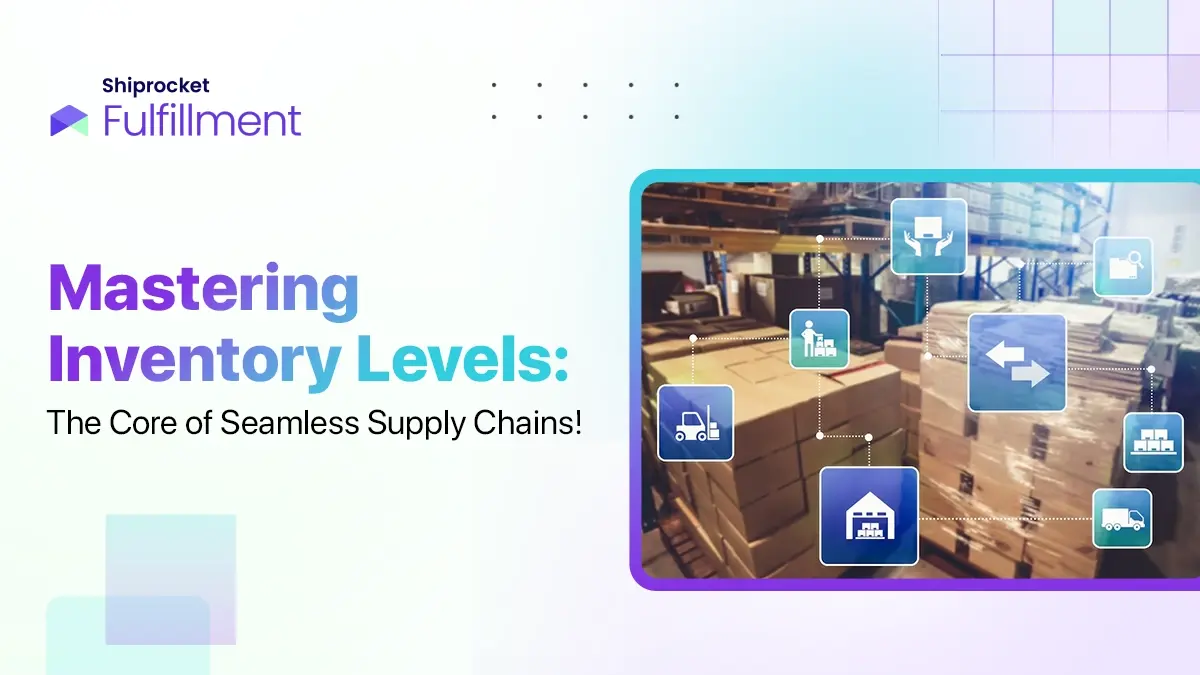- Logistics: Definition, Objectives, and Components
- Supply Chain Management: Definition, Objectives, and Processes
- Similarities between Supply Chain Management and Logistics
- How Supply Chain Management and Logistics Differ
- The Synergy in Operation: Logistical Components of the Supply Chain
- Conclusion
- Frequently Asked Questions(FAQs)
Today’s business landscape is complex, intricate and interconnected. Businesses rely heavily on logistics and supply chain management for smooth functioning. These two functionalities ensure the seamless movement of goods and services from suppliers to end consumers. Although often used interchangeably, logistics and supply chain management are distinctive yet intertwined fields that contribute to an organisation’s overall success. This comparative analysis delves into the definitions, objectives, and core components of logistics and supply chain management, shedding light on their similarities, disparities, and the synergetic impact they create when operating in harmony.

Logistics: Definition, Objectives, and Components
Definition: Logistics can be defined as the strategic coordination, execution, and supervision of the seamless flow of goods, services, and information from their origin to the final destination.
Objective: Its primary aim is to guarantee the timely availability of appropriate products in optimal quantities, at designated locations, and in impeccable condition while minimising expenditures and maximising customer contentment.
Components: The constituent elements of logistics encompass a range of interrelated activities, including transportation, warehousing, inventory management, packaging, material handling, and advanced information systems.
- Transportation entails discerning the most fitting mode of conveyance and efficiently managing the movement of goods between suppliers, manufacturers, and end consumers.
- Warehousing assumes a pivotal role in storing and disseminating products, ensuring their accessibility precisely when and where required.
- Inventory management focuses on the judicious optimisation of stock levels to cater to customer demand without succumbing to overstocking or stockouts.
- Packaging and material handling diligently safeguard products during transportation and storage while promoting efficient handling.
- Information systems provide up-to-the-minute data, facilitating effective planning, real-time tracking, and seamless coordination of logistical activities.
Overall, logistics represents a dynamic discipline that strives to streamline the supply chain, enhance operational efficiency,
Supply Chain Management: Definition, Objectives, and Processes
Definition of Supply Chain Management (SCM): It is a sophisticated approach to establishing a continuous flow of goods, services, and information across the supply chain. It entails strategic coordination, planning, efficient execution, and vigilant monitoring.
Supply Chain Management aims to achieve multiple objectives that contribute to the overall success and sustainability of the supply chain ecosystem. These objectives include:
- Optimising Customer Value: SCM focuses on delivering enhanced value to customers by ensuring the right products are available in the right quantities, at the right time, and in the right condition. By understanding and meeting customer demands effectively, SCM strives to maximise customer satisfaction and loyalty.
- Streamlining Operational Efficiency: SCM seeks to improve the efficiency of all supply chain processes, from procurement to production, distribution, and customer service. By reducing waste, minimising costs, and eliminating bottlenecks, SCM enhances productivity and profitability.
- Fostering Collaboration with Supply Chain Partners: SCM recognises the importance of collaboration and coordination among all stakeholders in the supply chain. This includes suppliers, manufacturers, distributors, retailers, and service providers. By fostering strong relationships and effective communication, SCM enables seamless information sharing, synchronised planning, and joint decision-making.
- Upholding Sustainable Practices: SCM acknowledges the significance of sustainable and environmentally responsible practices. It promotes the adoption of eco-friendly initiatives, such as reducing carbon emissions, optimising packaging materials, implementing recycling programs, and ensuring ethical sourcing. By incorporating sustainability into the supply chain, SCM contributes to long-term social and environmental well-being.

Processes in Supply Chain Management: Achieving synchronised operation within the supply chain requires the implementation of various processes. These processes include:
- Procurement: This critical process involves identifying and selecting reputable suppliers who can provide the necessary materials and resources to sustain the production cycle. The goal is to ensure a reliable supply of high-quality inputs while considering factors such as cost-effectiveness and supplier capabilities.
- Production Planning: This process involves meticulously mapping out methods and schedules for manufacturing goods. It takes into account resource availability, production capacities, cost minimisation, and optimisation of overall operational efficiency. By carefully planning production activities, SCM aims to meet customer demand while avoiding unnecessary delays or excess inventory.
- Demand Forecasting: Demand forecasting utilises historical data, market trends, and other relevant variables to anticipate future customer demand. This process plays a crucial role in aligning production and inventory levels to meet customer needs. Accurate demand forecasting helps optimise resource allocation, minimise stockouts, and reduce excess inventory.
- Order Fulfillment: Order fulfillment is a critical process within SCM that encompasses the swift and seamless processing of customer orders. It involves activities ranging from order capture to order processing and, ultimately, order delivery. Efficiencies in this process, such as accurate order processing and timely delivery, contribute to customer satisfaction and retention.
- Customer Relationship Management (CRM): CRM focuses on cultivating and nurturing robust connections with customers. It involves deeply understanding their needs, preferences, and buying behaviour to deliver exceptional service. By maintaining strong customer relationships, SCM can enhance customer loyalty and facilitate effective communication throughout the supply chain.
In essence, SCM is an analytical approach that emphasises seamless collaboration, planning, analytics, and CRM to achieve sustainable business practices and foster growth. By optimising processes and leveraging data-driven insights, SCM enables organisations to enhance operational efficiency, meet customer expectations, and drive overall supply chain success.
Similarities between Supply Chain Management and Logistics
Supply Chain Management and logistics are closely related and share several similarities.
- Movement of goods: Both disciplines aim to optimise the movement and storage of goods to meet customer needs efficiently.
- Coordination: They both involve the coordination and integration of various activities across different stages of the product journey.
- Strong communications: The hallmark of both logistics and SCM is strong communication. It involves extensive collaboration among multiple stakeholders, including suppliers, manufacturers, distributors, retailers, and customers.
- Deploy technology: Both services use advanced technologies and information systems to enhance visibility, traceability, and decision-making.
How Supply Chain Management and Logistics Differ
Logistics and SCM share common goals of optimising operations and enhancing customer satisfaction. But there are significant differences between SCM and Logistics in terms of scope, focus, and activities.
- Scope and Focus
- Logistics is the physical movement of goods and their storage and hence looks at related activities such as transportation, warehousing and inventory management.
- SCM takes a strategic approach to improve the overall supply chain to ensure objectives and customer expectations are matched.
- Activities
- Logistics primarily focuses on the physical movement and storage of goods
- SCM encompasses all activities involved in the supply chain, including procurement, production, and customer relationship management. Procurement, production planning, demand forecasting, and order fulfillment for processing customer orders.
- Strategic vs Operational differences
- Logistics is more operationally oriented, focusing on the tactical aspects of transportation, warehousing, and inventory management.
- SCM is strategically focused, aiming to optimise the entire supply chain by aligning its activities with organisational objectives and customer expectations.
- Collaboration and Integration
- Logistics primarily involves collaboration with internal stakeholders such as transportation providers, warehouse operators, and inventory managers.
- SCM considers collaboration, integration across the supply chain and coordinates between distributors, manufacturers, suppliers, customers and retailers.
These differences show that logistics and supply chain management perform functions that are related to each other. Logistics primarily deals with the physical movement and storage of goods, focusing on operational efficiency and immediate concerns within the supply chain. Therefore, it is very important for businesses to understand the differences and leverage both disciplines to ensure operational efficiency and delivery of optimised service to customers. It will help most businesses, especially eCommerce stores, gain a competitive advantage. To know more about this, go here!
The Synergy in Operation: Logistical Components of the Supply Chain
While logistics and SCM are distinct disciplines, they are interdependent and work together to ensure the efficient functioning of the supply chain. Proper warehousing facilities provide storage and distribution capabilities, facilitating the smooth flow of products. Inventory management helps balance supply and demand by optimising stock levels and reducing the risk of stockouts or excess inventory. By integrating these logistical components into SCM, organisations can achieve greater visibility, responsiveness, and efficiency in their supply chain operations.
Conclusion
Logistics and supply chain management are crucial disciplines for businesses seeking to achieve competitive advantage and customer satisfaction. SCM is the broader process that focuses on all aspects of the supply chain, while logistics focuses on the physical flow of goods. and related activities. These disciplines work together synergistically to ensure the seamless movement and delivery of products.
If you are an eCommerce company looking to enhance your business operations and improve customer service, it is crucial to prioritise the optimisation of your supply chain performance and logistics. By doing so, you can achieve operational excellence, streamline your processes, and ultimately deliver a superior customer experience.
To take your logistics and supply chain management to the next level, consider partnering with Shiprocket. Their all-in-one solutions provide comprehensive services that can help you streamline your logistics operations, enhance your supply chain performance, and ultimately drive business growth. Contact Shiprocket today to unlock the full potential of your eCommerce business.

Frequently Asked Questions(FAQs)
The main objectives of logistics are:
– Ensuring the availability of products in the right quantity
– Delivery at the right time
– Goods are in the right condition
– Goods are available at the right cost
It facilitates the movement of goods through various modes such as road, rail, air, and sea. It ensures that products are transported efficiently and timely between different stages of the supply chain.
Supply chain management enhances customer value by ensuring the availability of products, shortening lead times, providing accurate and timely information, and delivering excellent customer service.








